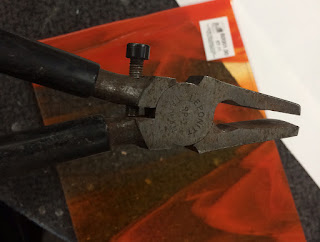What it is
Instagram is a place to show work and get followers. It is a photo and video sharing site owned by
Facebook. It is a place to tell visual
stories that lead to direct message conversations that can lead to sales. But it is not a direct selling site.
Developing a body of followers is a slow process requiring
continued commitment. Audiences tend to
focus on the Instagram stories and videos. Talking to camera, showing your workspace,
showing and telling about favourite products are some of the things you can do
to make stories for Instagram. Posting these
images and videos is way to get feedback on new products by inviting people to
react.
Using it
Instagram’s value is largely as a marketing tool. It is not a place to do frequent or blatant
selling. There is a general lack of
response to posts with an overt selling message. But occasional on-line sales to a group of
committed followers seem to work. Beware of the effort and cost of packaging
and posting, though.
What to post?
Frequent posting is essential to developing and maintaining
your group of followers. Remember the
title - Instagram. Instant reporting of developments
is important. It develops the connection
between what you are doing and your followers.
The things to concentrate on are such things as how the day has gone, stories,
new venues and products. Ask questions
of followers to get feedback and conversations developing.
Some use Instagram as their main social media source. Share anything in your life that you are
comfortable with everyone knowing, and of course, how the business is
developing. In all this sharing be
yourself, have your own voice. Your
postings need to be when there is news rather than at set times. Your account becomes livelier and more
personal when spontaneous.
Images
Good photographs are essential. Photos and videos are the essence of
Instagram. Your photos need to have
clear captions. The captions need to provide the context for each image. Some
suggest that concentration should be on the captions, and then finding a photo
to fit. The captions and hashtags are
the ways people find their way to your postings. You need to think about the terms potential
customers may use to find out about your kind of work. There is no need to overload the images with
hashtags. A few well thought out terms
will give better results. Look at the
kind of tags you would use to find items of interest outside your craft. The
really important element is an emphasis on providing a story in all the
postings.
Sharing
In addition to creating content, reciprocation of likes and
comments is important. This means you
need to spend some time on the platform to help develop followers. Instagram does assist in creating a community
of followers and makers, especially if you connect with makers of similar
things and exchange supportive chat.
Time commitment
There are suggestions that 80% of your time on Instagram
should be building your brand, and partaking in the community. The rest of the
time you can tell about new products, promotions, and answering questions that
will help people in deciding on the purchase.
But, generating sales is difficult by use of only Instagram.
Location of Outlets
Galleries use Instagram too.
But it is mostly about raising awareness of their businesses, so sales on
Instagram are incidental to them. They
use it to let people know about news of the gallery and artists, their interests,
and promote their exhibitions. For them
it is about publicity.
Their secondary use is by browsing and getting a sense of potential
exhibiting artists as persons and what their expertise and audience may be. This means that getting galleries as
followers can be a way to maintain contact with galleries and get invitations
to participate in events.
How Can Glass Enthusiasts use Instagram?
It may seem the emphasis of this post is on full time craft
artists, but these things are applicable to any craftsperson who wants their
work to be more widely known and purchased.
Anyone who is going to craft fairs needs to do a lot more
than turn up with product. Many times, I
hear of people lamenting the poor attendance at an event. Or, the concern that people don’t seem
interested in buying your work.
The organiser of the craft event can do only a limited
amount of promotion. Their promotion
will be largely general and untargeted.
Your promotion will be much more targeted, because it will be directed
at your followers – an already interested audience. If you can get your followers to attend the
event, or spread knowledge of your attendance at an event, you have a greater
chance of having a good event.
In summary, Instagram can be an element in building an
audience for your glass work. This can
increase attendance of interested people at the events you are involved in, if
you put effort into getting followers who appreciate your work.

















